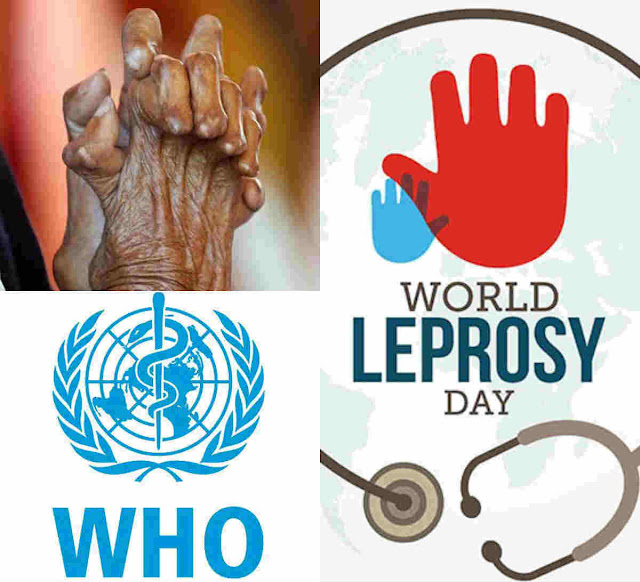Focus on ending leprosy-related disabilities in girls and boys and on accelerating towards a leprosy-free world
 |
| WHO lauds Global Partnership to Stop Leprosy; will help renew efforts for zero leprosy |
Welcoming the launch of the ‘Global Partnership to Stop Leprosy’, the World Health Organization today said a stronger force with a common vision was much needed to accelerate efforts to end leprosy.
“A collaborative approach by leading partners to address remaining challenges with innovative solutions is expected to provide renewed energy and impetus to accelerate efforts against leprosy. This is a turning point, we must harness this energy to free the world of leprosy forever,” said Dr Poonam Khetrapal Singh, Regional Director for WHO South-East Asia, who also steers WHO’s Global Leprosy Programme.
The new partnership, launched ahead of the World Leprosy Day 2018, brings together leading agencies and organizations working towards zero leprosies in various parts of the world. The partnership is expected to boost collaboration between national programmes, technical partners, academic sector, patient advocates and donors as it aims to support the roll-out of global policy options, scale up interventions and mainstream leprosy under the aegis of universal health coverage.
The Global Partnership to Stop Leprosy is also expected to enhance implementation of WHO Global Leprosy Strategy 2016-2020 “Accelerating towards a leprosy-free world” which focuses on stronger political ownership, enhanced disease control and eliminating stigma and discrimination.
While globally, elimination of leprosy as a public health problem was achieved in 2000 with its prevalence reduced to less than one case per 10 000 population, every year on an average more than 200 000 new cases are reported. Though there is progress, it is very slow.
Advocating for enhancing efforts against leprosy, World Leprosy Day is observed on the last Sunday of January every year. This year, the day focuses on the critical target of zero leprosy-related disabilities in girls and boys by 2020.
In 2017 as many as 18 472 new child cases of leprosy were reported to the World Health Organization worldwide. These girls and boys must be diagnosed and given multidrug therapy (MDT), provided free of cost by WHO, before visible deformities and disabilities manifest.
Dr Khetrapal Singh said, “disabilities inhibit development, limit life-long productivity and result in stigma and discrimination. Given the ongoing presence of deformities and disabilities among new cases of leprosy, including in girls and boys, decisive action must be taken to detect and treat cases earlier.”
Reaching zero leprosy-related disabilities in children means tackling stigma and discrimination head-on, the Regional Director said, adding that fear of social exclusion continues to be a major cause of delay in diagnosis and treatment. It is, therefore, a major cause of deformity and disability.
“On World Leprosy Day this year, we must reflect on and renew our focus on ending leprosy-related disabilities in girls and boys and on accelerating towards a leprosy-free world. We must renew our commitment to achieving a world where no child is left behind,” Dr Khetrapal Singh said. The Global Partnership to Stop Leprosy makes us confident together we will be able to move closer to a leprosy-free world.
WHO Lauds the collaborative approach to the Global Partnership to Stop Leprosy
 Reviewed by Gutty NewzSnippet
on
January 27, 2018
Rating:
Reviewed by Gutty NewzSnippet
on
January 27, 2018
Rating:
 Reviewed by Gutty NewzSnippet
on
January 27, 2018
Rating:
Reviewed by Gutty NewzSnippet
on
January 27, 2018
Rating:







No comments: